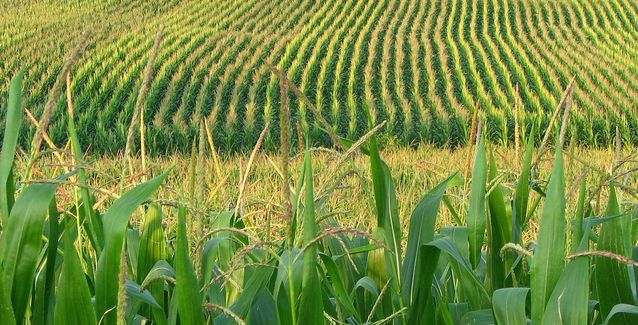Corn farmers struggle with worst planting season in more than a decade
by April 29, 2019 5:30 pm 1,409 views

Heavy spring rains have significantly impacted Arkansas corn farmers. Only about 47% of the state’s planned 830,000 acres of corn had been planted as of April 19, according to a report from the U.S. Department of Agriculture. The 47% figure is well behind the five-year average of 74% normally planted by this point in the season.
The projected acreage was up 170,000 acres from 2018, but the slow planting combined with the effects of continuously wet weather on growers’ efforts to establish stands, now put the number in doubt, according to the University of Arkansas Division of Agriculture.
Brent Griffin, staff chair for the Prairie County Cooperative Extension Service office, said rainfall in his area was approaching up to 10 inches in the last three weeks.
“Prairie County farmers have been combating the rainfall and cool temperatures since the last week of March,” Griffin said. “Corn that was planted during the final week of March and first week of April has had the toughest time in emerging from the soil. The rain, along with cool conditions, stopped the germination and caused several acres to be replanted.”
Jason Kelley, extension feed grains agronomist, said the state’s corn growers are facing a tough decision as the end of the normal planting period crawls by.
“Most corn in the state is typically planted from mid-March to the end of April,” Kelley said. “Here it is, late April, and farmers are still waiting for the ground to dry out to plant for the first time, or are needing to replant due to poor stands. We have had a few short periods in March and early April to get corn planted, but those limited dry days were followed by heavy rains, which has caused poor stands in many fields.”
Growers will need to decide whether to keep planting, keep the stands they have now, replant, plant a different crop or declare prevented planting, he said. As May approaches, growers planting corn will likely see declining yields, although “in the last few years, there has been some very good May planted corn,” he said. “Ideally, we like to get corn planted in March and April.”
Cooperative Extension Service agents in all areas of the state reported excessive rainfall last week. According to the USDA’s weekly crop progress report, the rainfall in the state averaged more than 7.6 inches over the past four weeks, more than twice the norm. The National Weather Service reported unusually high rainfall throughout much of the Mid-South region, including Arkansas, Louisiana, Mississippi and Tennessee.
NWS predicts continued rains for this week as well, throughout many parts of the state. There are rain chances Tuesday night through Friday morning throughout the corn growing regions of the state, with the most significant chance on Thursday, according to NWS.
“This is the most challenging and disappointing planting season that our corn farmers have faced since 2007, when a late Easter freeze caused widespread replanting,” Kelley said. “This year, we have large areas of the state where more than 50% of the planted corn will need to be replanted.”
Corn surpassed soybeans in 2018 as the nation’s most widely grown crop. More than 90 million corn acres were grown last year, according to USDA. Up to 20% of U.S. corn is exported, and those exports add about $75 billion to the U.S. economy, according to grains.org. Corn is a primary ingredient in livestock feed, and is used in human food production, ethanol fuel, and other uses.
